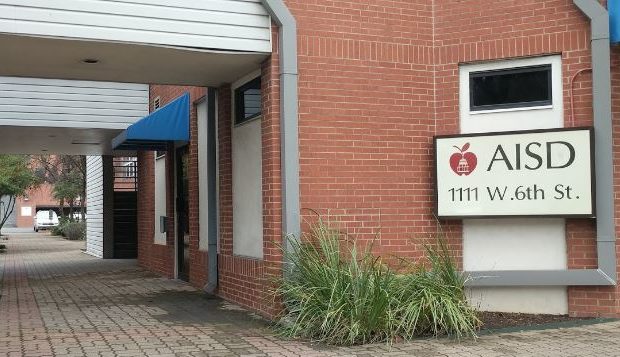School district fiscal forecast bleak
Wednesday, January 24, 2018 by
Joseph Caterine Although it did not come as a shock, the precarious position of the Austin Independent School District’s financial future dampened the mood at the end of the board of trustees’ Jan. 22 meeting. The ever-increasing amount of recapture the district pays back to the state in compliance with Chapter 41 is expected to exceed the retained revenue of the district’s maintenance and operations budget in the next couple of years.
“We knew this was coming,” Superintendent Paul Cruz said. “Now it’s actually going to be about how to (adjust) the operating budget to fix some of those recapture pressures.”
For this fiscal year, the district is projected to retain $648,458,344 and receive $20,762,107 in state aid, but it will have to pay $537,340,016 in recapture. By Fiscal Year 2019-20, however, recapture will increase to $771,127,440 and retained revenue will decrease to $625,487,225. Trustee Geronimo Rodriguez said, in layman’s terms, that means that more Austin taxpayer money will be going to kids outside the city than what will be going to AISD students. “We’re losing local control of our schools,” he said.
In the past few months, the administration has begun to explore charter options to relieve some of the financial strain. Mendez Middle School, which risks possible closure by the state if it fails to bring up its academic performance this year, has been selected as a possible candidate for the Senate Bill 1882 ISD-Charter partnership grant.
The district is also in the process of obtaining a Transformation Zone grant through the state that will hand over autonomy of several low-performing east side schools to a partner organization. There has been some resistance to these measures from their respective communities, but board President Kendall Pace said that the fiscal forecast was proof that the district was between a rock and a hard place.
“We can’t sustain declining enrollment,” said Pace. “It’s unfair when you have escalating expenses that aren’t tied to inflation. We’re going to have to make some tough decisions.”
Chapter 41 of the Texas Education Code compels bigger cities like Austin to share their local tax revenue with smaller school districts around the state. The district, under the leadership of Chief Financial Officer Nicole Conley Johnson, who was recently appointed to the new Texas Commission on Public School Finance, has tried various methods to cut costs as much possible, but she said the budget is about as lean as she could make it.
Not all struggling schools are eligible for a charter option, unfortunately. The Facility Master Plan Update adopted last year identified several under-enrolled elementary schools that may have to be consolidated if their student body does not rise. The district does offer target utilization plans to help those schools’ communities advertise to recruit more students.
On a bittersweet note, Trustee Julie Cowan said that although she also found it difficult to accept the possible consolidations, she was comforted by the fact that downsizing was not necessarily a bad thing. “When you have a robust community, even when it means pulling together two smaller ones, you can have more programs. You can do more and offer more to your students,” she said.
The Austin Monitor’s work is made possible by donations from the community. Though our reporting covers donors from time to time, we are careful to keep business and editorial efforts separate while maintaining transparency. A complete list of donors is available here, and our code of ethics is explained here.
You're a community leader
And we’re honored you look to us for serious, in-depth news. You know a strong community needs local and dedicated watchdog reporting. We’re here for you and that won’t change. Now will you take the powerful next step and support our nonprofit news organization?









